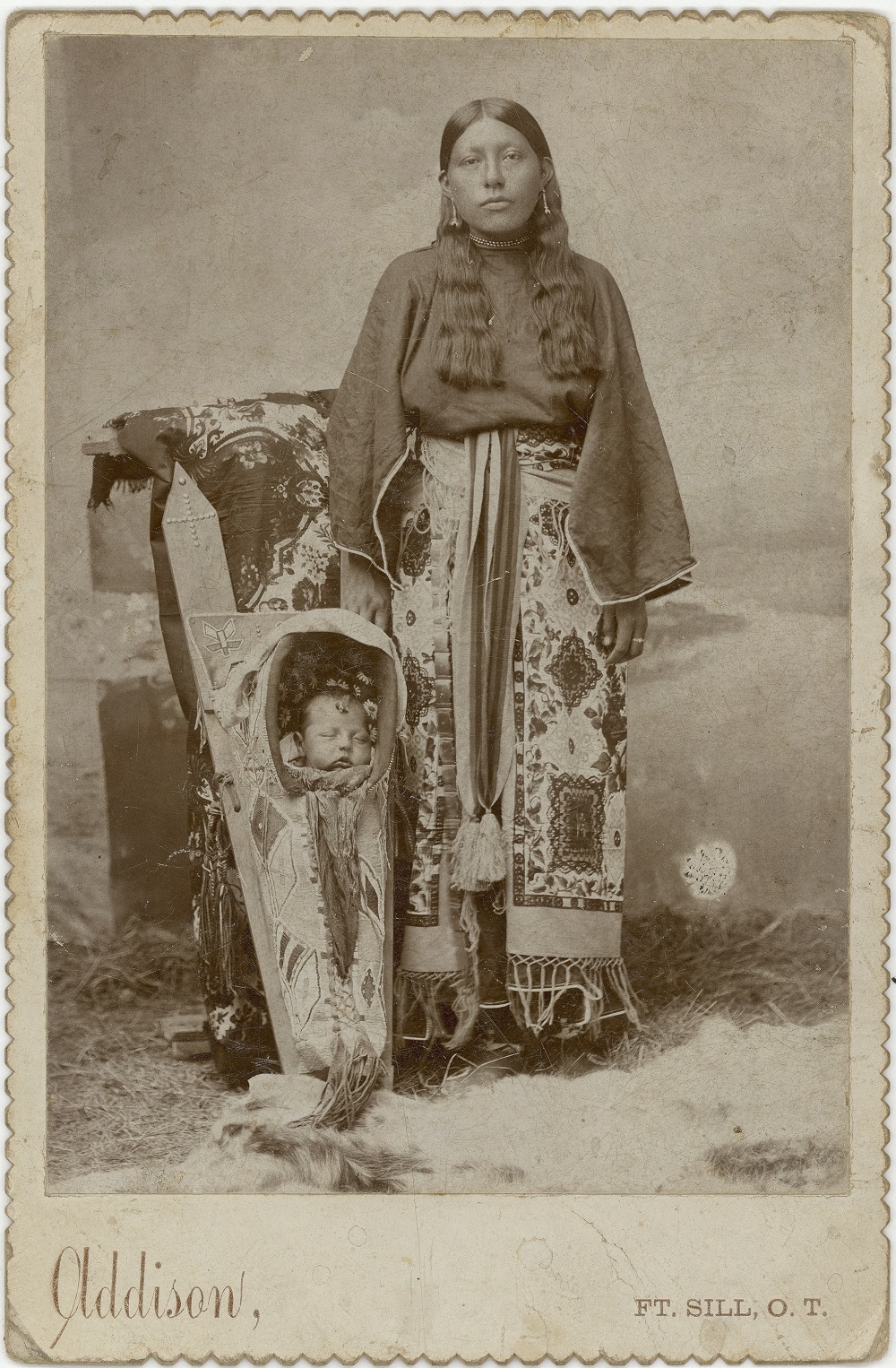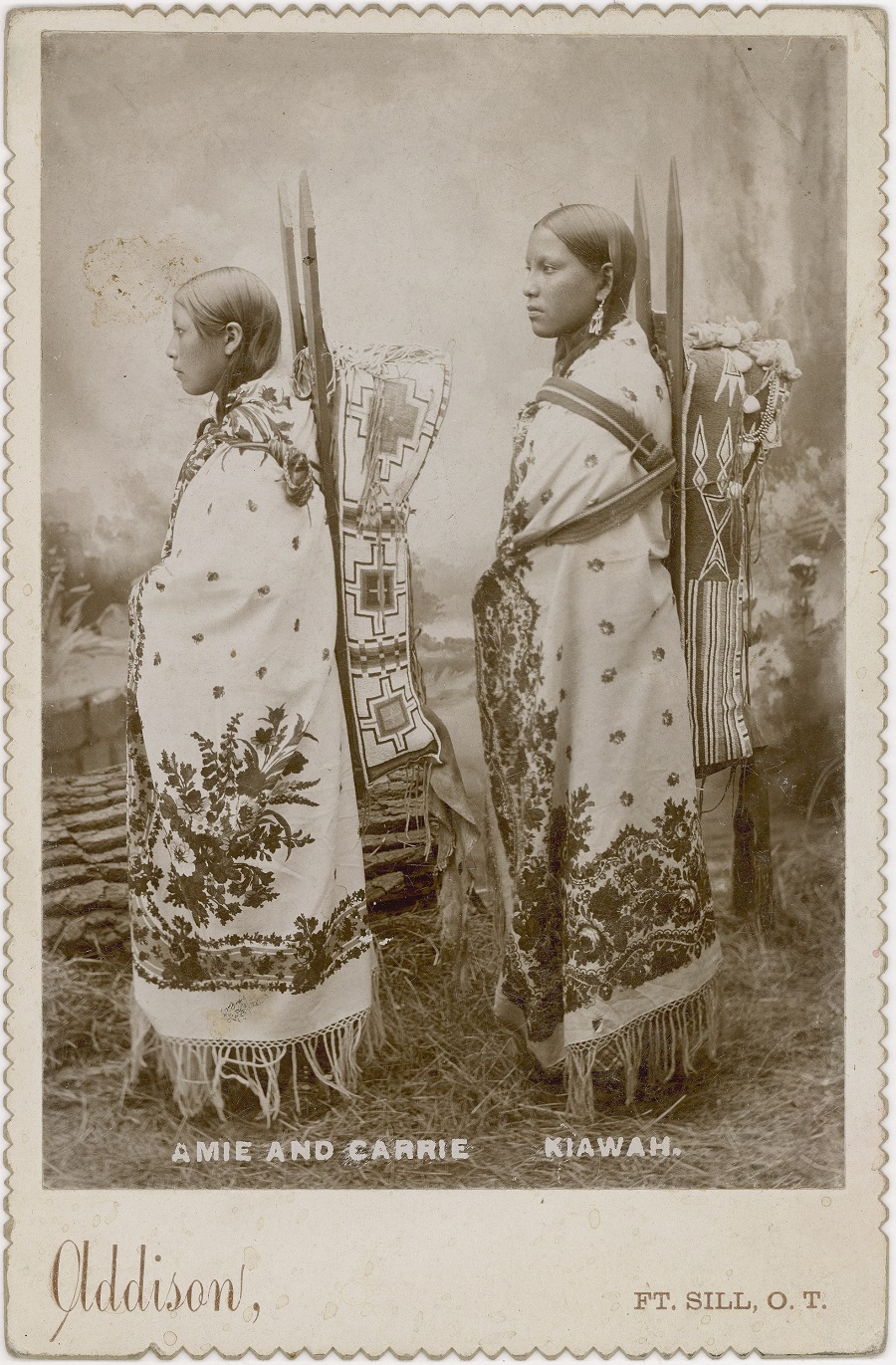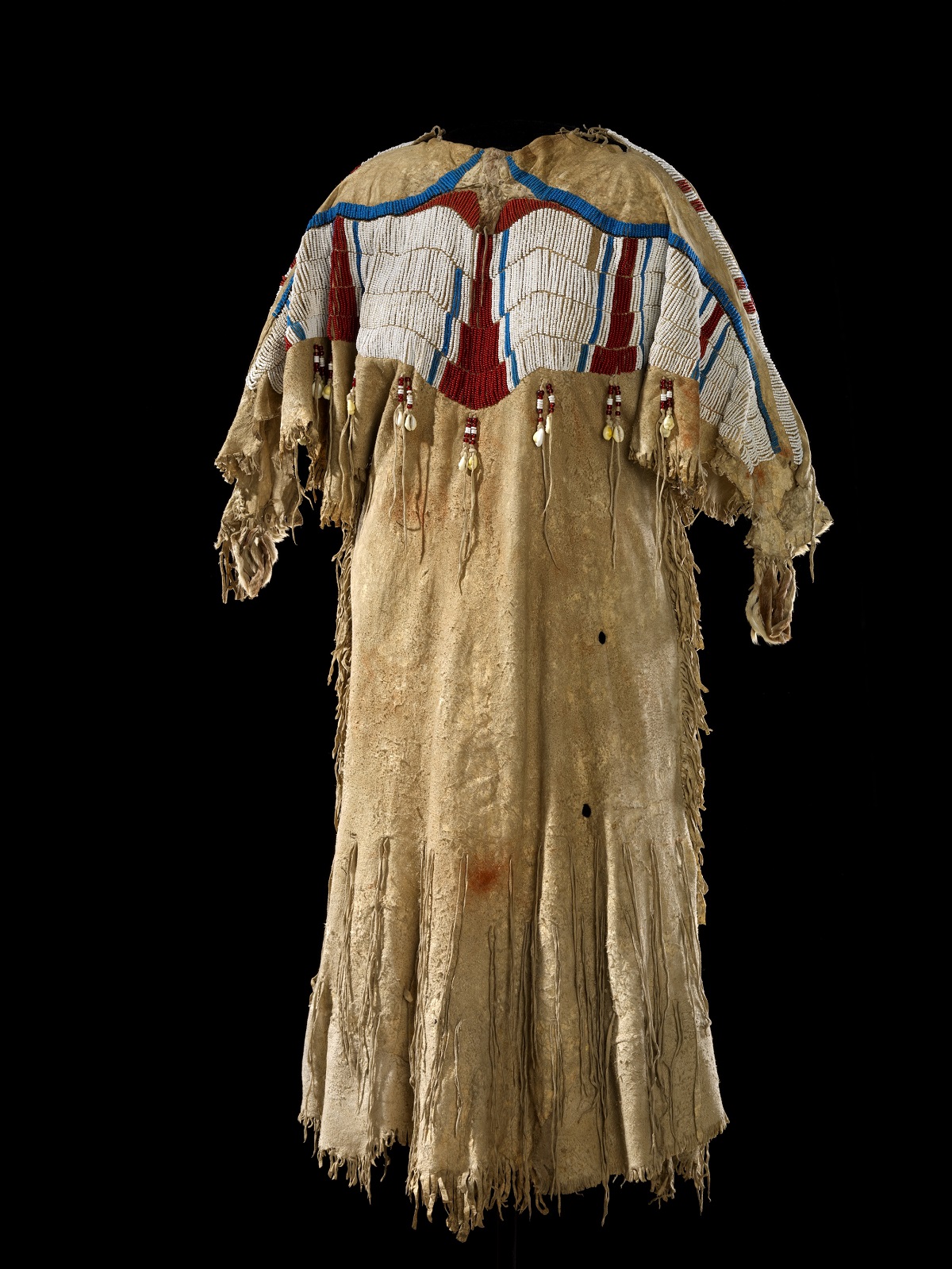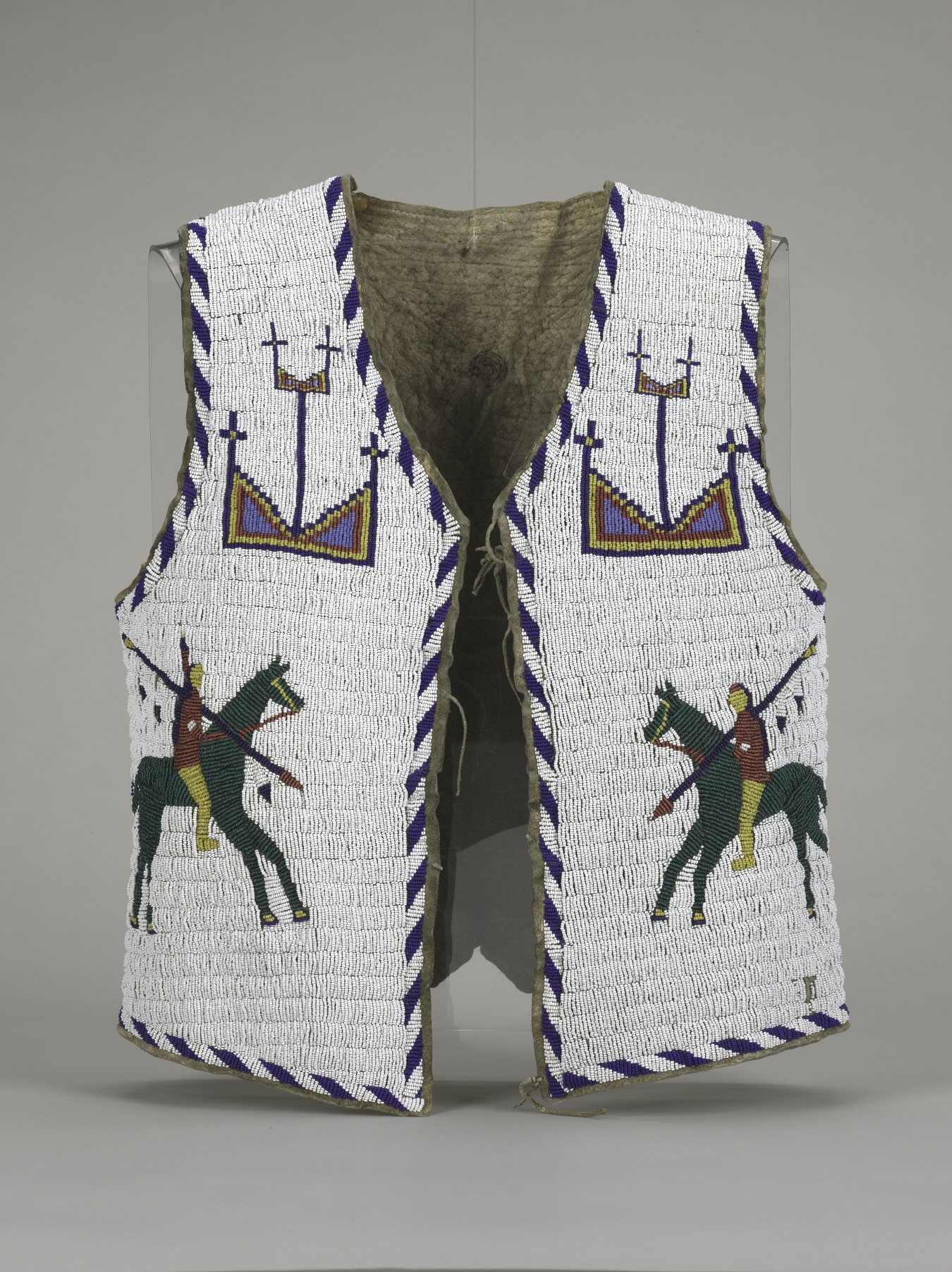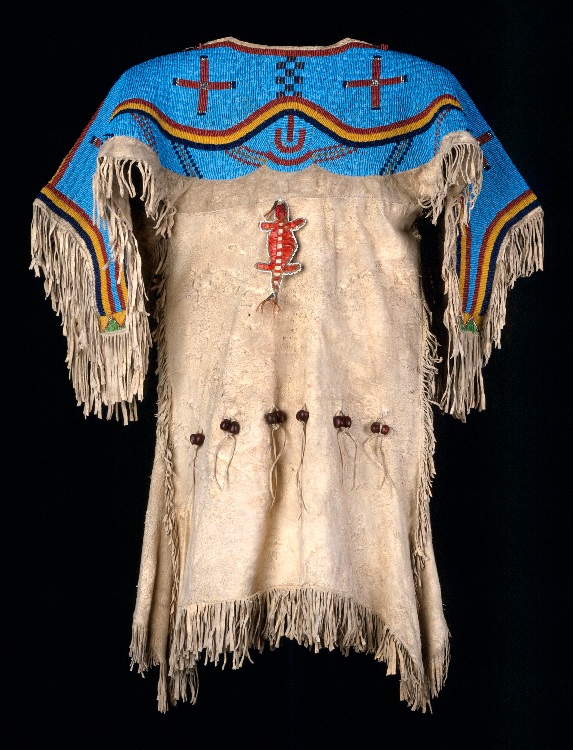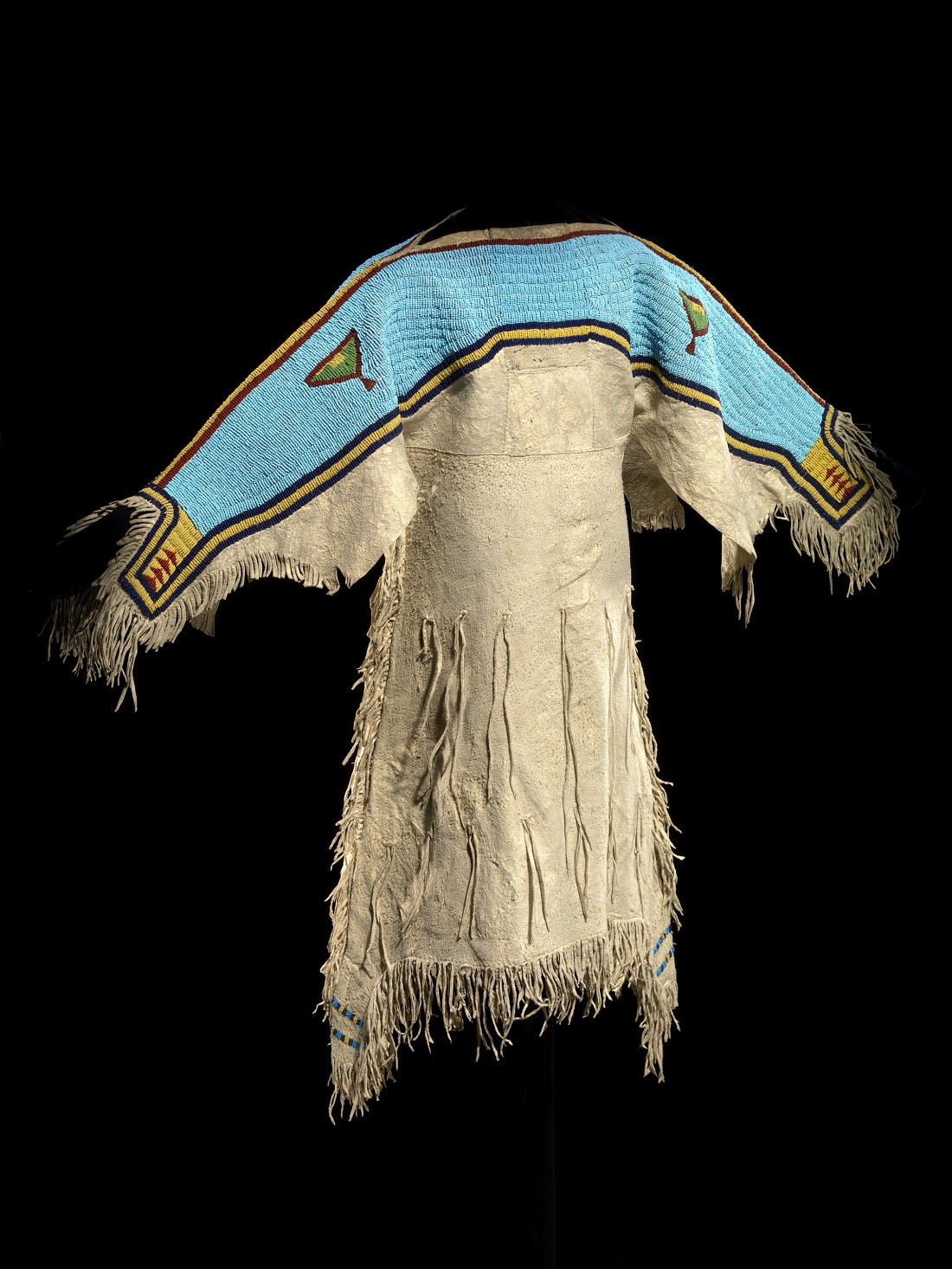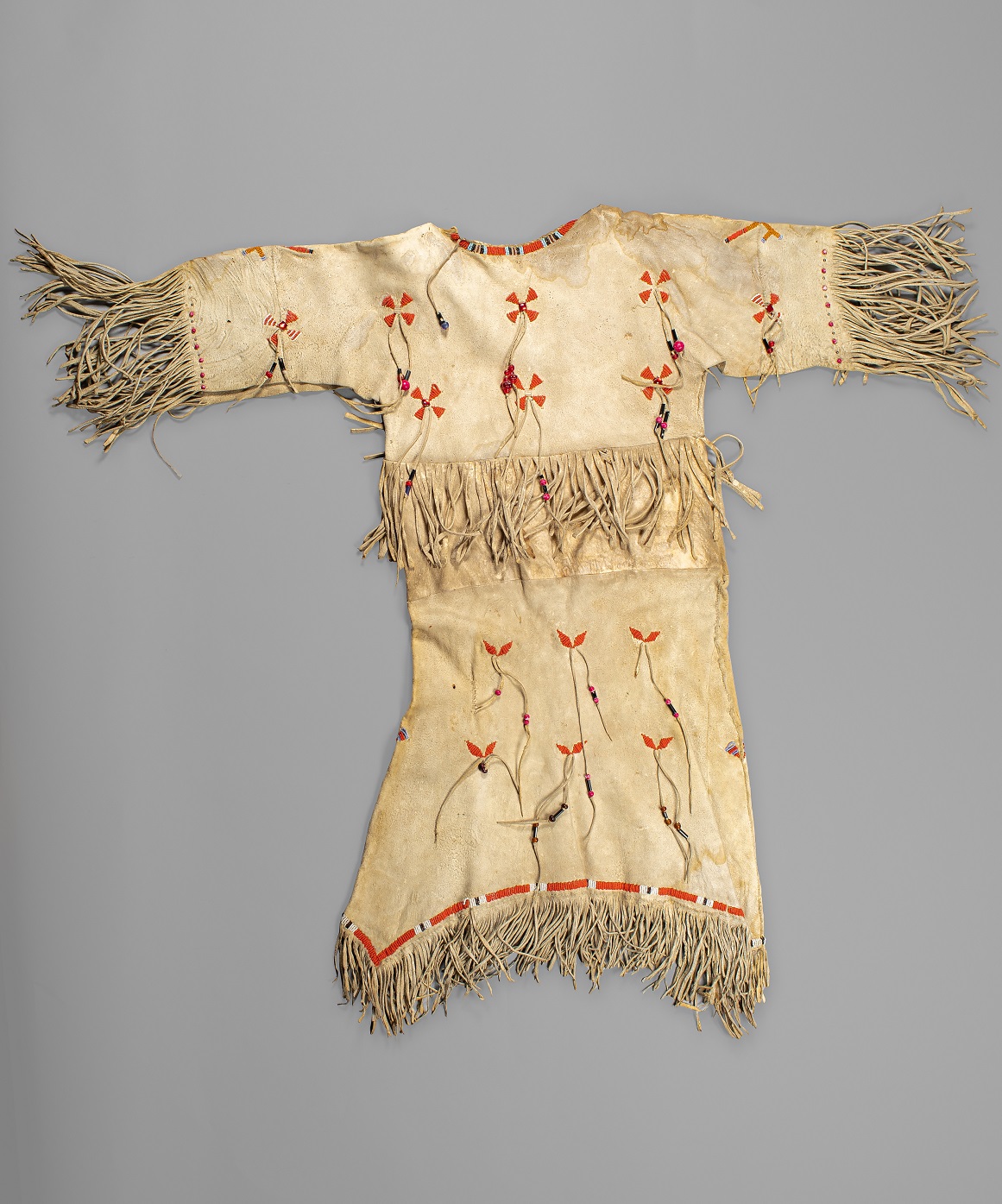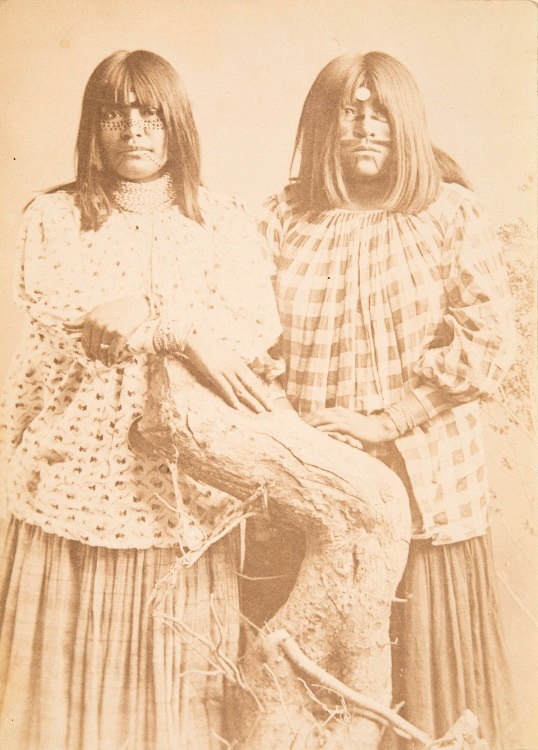Western Indigenous Clothing
George A. Addison, Cabinet card studio portrait of Lissie Woodard (Kiowa) standing next to her son Oliver, who is sleeping in a cradleboard. Ca. 1894-1896; Alice Kennedy Eagan Collection of George A. Addison Fort Sill photographs, Box and Folder Number; National Museum of the American Indian Archive Center, Smithsonian Institution.
Western Indigenous Clothing
George A. Addison, Cabinet card studio portrait of Amie and Carrie, two young Kiowa women, carrying beaded cradleboards on their backs. Ca. 1894-1896; Alice Kennedy Eagan Collection of George A. Addison Fort Sill photographs, Box and Folder Number; National Museum of the American Indian Archive Center, Smithsonian Institution.
Background
As American settlers moved west of the Mississippi River, they encountered hundreds of Indigenous communities that had inhabited the land for thousands of years. Each western Indigenous community had unique lifeways and cultures that were developed over generations in response to their geography and intertribal interactions. As American settlers moved west, the U.S. government downplayed the impressive diversity of Indigenous history and culture to win support for Indian Removal. Today, it is critical that all students of American history make an effort to learn about the traditions and histories of western Indigenous communities as a way of amending this erasure.
About the Document
This collection of images offers a taste of the beauty and diversity of clothing made and worn by western Indigenous women in the 1800s. The style and decoration of Indigenous clothing varied widely between communities and from region to region. Because women were primarily responsible for making clothing in Indigenous communities, each photograph is also a demonstration of the skill, culture, and taste of the woman who made the items.
- This photograph of Kiowah mother Lissie Woodard with her son Oliver was taken by photographer George A. Addison in a studio at Fort Sill in Oklahoma Territory. The Kiowah inhabited an area of the Southern plains that stretched across most of modern-day Oklahoma and parts of Colorado, Texas, New Mexico, and Kansas. Kiowah women traditionally wore poncho-style tops, knee-length leggings, and a skirt that could be removed in hot weather. Baby Oliver is sleeping in a decorated cradleboard, a piece of equipment that allowed Lissie to carry Oliver on her back while she was walking and working. Today, the Kionwah are headquartered in Oklahoma.
- This is a photograph of two Kiowah women called Amie and Carrie demonstrating how cradleboards were worn when walking and working. This photograph also shows the style of cloak Kiowah women wore to keep warm. Amie and Carrie were very likely the women’s “American” names. In this time, period many Indigenous people used Western-style names when dealing with settlers because settlers made no effort to learn or speak their languages.
- This is an example of a dress made and worn by Walla Walla women. The Walla Walla originally inhabited an area of the Northwest plateau that stretched across modern-day Washington and Oregon. This style of dress is called a deer tail dress. It is made by stitching together two deer hides in a way that places the two tails at the center in the front and back. The yoke of the dress is decorated with beads and cowrie shells. Today, many Walla Walla live in Oregon.
- Vests like this one were hand-crafted by Lakota women for the men and boys in their families. The Lakota tribe inhabited an area of the Great Plains that stretched across modern-day North and South Dakota This specific example is made of beads sewn onto buckskin. The images on Lakota vests might represent the personality or ambitions of the person who wore it or communicate a message to the world. Today, many Lakota live in North and South Dakota.
- This Lakota girl’s dress is also embellished with intricate beadwork, but it features a special accessory. The small lizard pouch held the child’s dried umbilical cord. The Lakota and some other Great Plains Indigenous communities preserved umbilical cords after birth as a symbolic link to a child’s time in the womb. The pouch made to hold the umbilical cord was the child’s first toy. It was also a charm that could protect the child and ensure a long life.
- This Eastern Shoshone girl’s dress demonstrates the cultural exchange that took place between Indigenous communities in the West. The Eastern Shoshone inhabited an area along the eastern slope of the Rocky Mountains that stretched across modern-day Wyoming and Montana. The colors of the glass beads evoke the style of tribes that lived west of the Rocky Mountains. The outlining follows the Northern Plains style. The fringe resembles Lakota decorations. Today, the Eastern Shoshone are headquartered on a reservation in Wyoming.
- This is a Southern Plains-style dress worn by a woman of the Kiowah or Comanche tribes. The Comanche inhabited an area of the Great Plains that stretched across modern-day Wyoming, Nebraska, Colorado, Texas, Kansas, New Mexico, and Oklahoma. The beading on this dress is simpler in style than those on dresses from the Northern Plains, in keeping with the fashions of the Southern tribes. Today, the Comanche are headquartered in Oklahoma.
- This photograph shows two women identified as Apache posing in a studio. Apache is a name used to refer to over a dozen distinct tribes that lived in an area of the Southern plains that stretched across Texas, Arizona, New Mexico, and Oklahoma. This photograph demonstrates how Apache women incorporated European textiles into their clothing in the late 1800s. Today, the Apache inhabit reservations in Arizona and New Mexico.
Vocabulary
- cowrie shell: The shell of a marine gastropod that lives in warm waters.
- Indian Removal: The U.S. policy of forcing Indigenous communities from their ancestral lands to make the land available for white settlers.
- umbilical cord: A cord made of blood vessels that attaches a fetus to its mother when it is in the womb and transfers life-sustaining nutrients during gestation.
- yoke: The piece of a shirt or dress that fits around the neck and over the shoulders.
Discussion Questions
- What do these sources reveal about the cultural exchanges that took place in the West?
- How can we learn about the life and work of Indigenous women by studying their clothing?
- Why is it important to acknowledge the diversity of western Indigenous culture?
Suggested Activities
- Use these sources to introduce a project where students pick and learn about the culture and traditions of a specific western Indigenous group, and then ask students to follow that group’s story as you continue your unit on westward expansion.
- After examining these objects, invite students to read the life story of Caroline Ga-ha-no Parker and discuss how Indigenous people changed American perceptions about their arts.
- For more on the art and work produced by Indigenous women, see:
- The movement of white American settlers westward had a devastating impact on the Indigenous communities that already inhabited those lands. To learn more, see:
Themes
AMERICAN CULTURE


